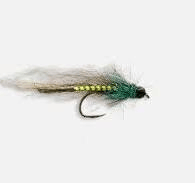
In selecting the fly pattern for our November session, I chose Hogan’s Winter Leech. This pattern will further enhance the tying skills of our Beginner’s class as well as to provide a great fly for fishing into the winter months. As I have noted in previous issues of our Streamlines Newsletter, we fly fishers need to have diverse fly patterns that we can use throughout the four seasons of the year. A successful fly fisher will choose an artificial with reference to the natural food sources available to the fish.
We look forward to having you join us at the Beginner Fly Tying class on Tuesday, November 19th (at 7 p.m.)* at Trinity United Methodist Church, West Patrick St., Frederick. As always, we welcome fly fishers who have never tied an artificial fly to join our Beginner Fly Tying classes. Materials for the fly pattern of the month are provided to all who attend. Vises and tying equipment are also provided for those who are newcomers to tying an artificial fly.
*If you are planning on attending the session, please remember to reply to the PVFF fly tying group email which will be sent to you several days prior to the class (dfine1443@gmail.com). It is important for Martyn and I to know that you plan to attend, so that we can have sufficient materials available. Also, please let us know if you would like to borrow a vise and tools for the session.
Tying instructions:
Materials:
- Black 6/0 thread
- 3/16 bead (or brass cone head equivalent)
- 0.25 lead wire
- Streamer hook (size 4-8)
- Mohair yarn (colors to match marabou tail)
- Barred rubber legs (color to complement abdomen)
- Ice dubbing
- Marabou flank feather
Tying Steps:
- Pinch down hook barb, then insert bead (or cone head) onto the hook
- Immediately behind the bead apply the lead wire and then wrap lead toward the bend of the hook, stopping ~1/8” from the hook bend. Push the lead wrap forward up against the bead or under the cone head.
- Secure the lead in place with thread wraps starting at the rear (behind the lead wrap) and wrap forward over the lead and return thread wraps to the rear of the hook.
- Flatten the lead wraps using a small needle-nose pliers.
- Tie in a marabou feather at the hook bend (length of the marabou extending beyond the bend) = hook shank. Clip off the excess marabou which is facing forward.
- Tie in 2 pieces of mohair yarn (at the rear of the hook, where the marabou was first tied in). Advance tying thread forward stopping shortly behind the bead or cone-head.
- Palmer one piece of mohair yarn forward while stroking the mohair fibers to the rear. Secure this piece of yarn immediately behind the bead or cone-head.
- Repeat this by palmer-wrapping the second piece of mohair yarn forward and securing in place. Trim of remaining mohair yarn. Whip finish! Palmering definition: to wrap material (e.g. feathers) around the hook shank while stroking the fibers to the rear of the hook.
- Secure the forward-facing piece of mohair yarn, and trim it off. In particular the forward-facing yarn fibers. Pick out (or use a dubbing brush) any mohair fibers to even out the body of the fly.
- Tie in pair of legs on each side of the fly (using the loop method). To do this, first fold the rubber leg. Lay the folded rubber against the near side of the fly with the ends to the rear. Secure with 2-3 thread wraps and then trim away the forward-facing pieces. Repeat on the opposite side of the fly.
- Dub a collar around the rear portion of the bead or conehead.
- Do any additional brushing of the fly to create a slender-looking winter leech.
By Don Fine
You must be logged in to post a comment.